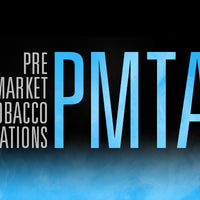The vaping industry was constantly making headlines in 2016. In fact, there was so much news surrounding the vaping industry last year that we had to break this review down into 3 parts. So, let’s take a look at part 1: vape news, research and regulations from January through April.
A Review of the Vaping Industry in 2016: Part 1
From positive news out of the UK to the “teen vaping leads to smoking” gateway theory that just won’t go away, there was much to talk about when it came to the vaping industry in 2016.
Vape News from January 2016
In early January 2016, the Consumer Advocates for Smoke-Free Alternatives Association (CASAA) released the results of the largest vaping survey to date. Conducted in November and December of 2015 with more than 20,000 participants, the results contradicted several ongoing anti-vaping claims. Not only did the results reveal the importance of vaping for smoking cessation among survey participants, but also the importance of flavors when it comes to adult vaping. Unfortunately, the survey results didn’t get as much attention as the “teen vaping leads to smoking” gateway theory, which dominated news headlines for the remainder of the month.
In the meantime, the UK started off the year by embracing vaping with the approval of the first vaping device to be prescribed for smoking cessation. Thanks to Public Health England’s Evidence-Based Review on electronic cigarettes published in August of 2015 and its conclusion that “vaping is 95% less harmful than smoking”, physicians in the UK can now prescribe the vaping device for smokers seeking assistance in quitting smoking.
Related: Public Health England’s Evidence-Based Review Recap
Vape News from February 2016
February 5th marked the first time a legal entity in the US made a clear distinction between vaping and smoking during a court hearing. The accused, Sean Thomas, was arrested for violating New York City’s Smoke Free Air Act after being caught vaping on a subway platform. Although the Smoke Free Air Act does prohibit vaping anywhere smoking is banned, Thomas was being charged under state law, which did not include vaping in the ban. This allowed Thomas to successfully challenge his citation in court.
After the judge defined smoking as ““the burning of a lighted cigar, cigarette, pipe or any other matter or substance which contains tobacco”, he went on to rule that vaping “does not fit within the definition of ‘smoking’ under the law” and ruled in favor of the plaintiff.
Vape News from March 2016
On March 3, 2016, California lawmakers voted to raise the smoking/vaping age from 18 to 21 in an attempt to make it more difficult for minors to acquire tobacco and vaping products. This legislation came with some tough criticism as opponents pointed out that American citizens are officially recognized as adults as of their 18th birthday and if at that age they can commit a felony and go to prison, then they should have the choice of whether or not they want to buy a pack of cigarettes.
To add more fuel to the debate just one week after the vote, Weill Cornell Medicine investigators published study findings which suggested that “imposing age restrictions on the purchasing of electronic nicotine devices may unintentionally increase teenage cigarette use”.
Vape News from April 2016
On April 4th, 2016, the United States Department of Transportation officially implemented a ban against vaping inflight. Among the reasons for the ban was the issue of increasing reports of exploding batteries in e-cigs, as well as concerns about the unknown risks of breathing vapor within confined spaces.
April 19th brought some positive news to the vaping industry during the Agricultural and Rural Development Appropriations bill hearing when the </a href=”https://production-blog.wclan.co/fda-regulations-update-possible-win-for-vaping-industry/” target=”new”>House Appropriations Committee passed the Cole/Bishop Amendment by a 31-19 vote. The amendment would move the FDA’s set predicate date of February 15, 2007, to the effective date of the deeming regulations (August 8, 2016) to prevent the potential shutdown of 99% of the vaping industry. If passed, the amendment would grant products on the market prior to the August 8th date the ability to bypass the extremely costly PMTA process and remain on the market.
More positive news came on April 20th when a study on vaping and indoor air quality was presented at the 4th Workplace and Indoor Aerosols conference in Barcelona. The study’s findings suggested that the contents of exhaled e-cig vapor disappear within seconds after being tested in an enclosed room. This study, among others, contradicts the theory that secondhand vapor is just as harmful as secondhand smoke.
Perhaps the best news the vaping industry could have received (at least in the UK) arrived on April 28th when the UK’s Royal College of Physicians published the report, “Nicotine without smoke: Tobacco harm reduction”. The report concluded that vaping was likely to be beneficial to UK public health and e-cigarettes should be promoted widely for smoking cessation. The findings of the report fell right in line with Public Health England’s evidence-based review on e-cigs from 2015.
What Came Next for the Vaping Industry?
Now that we’ve you the rundown of the news surrounding the vaping industry during the first quarter of 2016, stay tuned for Part 2 as we take a look at the vape news from May through August of 2016.






